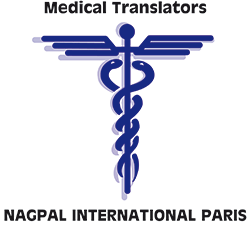
Medizinische Übersetzer
Paris • Cambridge • New York
65, rue Pascal 75013 Paris Frankreich
Tel: +33 (0)1 47 07 55 28
Fax: +33 (0)1 43 37 11 46
E-mail:
Mitteilung des Vorsitzenden
zum Thema Qualität
Qualitätsrichtlinien für unsere Mitarbeiter
Beispiele unserer Arbeit
Pharingoplasty (von Französisch in Englisch)
RESULTS OF 36 PHARYNGOPLASTIES
FOR SERIOUS PHARYNGEAL STENOSIS
CAUSED BY CAUSTIC AGENTS
BRETTE Marie-Dominique* (P.H), AIDAN Didier (ACCA)*,
FRITSCH Sylvie (ACCA)**,
AIDAN Karen (CCA)**, CHERIF-CHEIKH Pierre-Yves (ACCA)*,
SARFATI Emile (PU-PH)** and MONTEIL Jean-Paul (PU-PH)*
Summary
The authors analyse the results of pharyngoplasties carried out in 36 patients suffering from serious pharyngeal stenosis secondary to ingestion of a caustic substance, which in 35 cases was the result of a suicide attempt. In all the patients, pharyngoplasty was combined with oesophagoplasty due to associated oesophageal or oesophago-gastric burns having necessitated oesophagectomy or emergency oesophago-gastrectomy, or having subsequently led to stenosis.
In summary, two types of treatment have been developed: oesophago-pharyngostomy, with simple anastomosis of the digestive tract at the level of the pharynx, and true pharyngoplasty, comprising partial or complete reconstruction of the pharynx. The authors distinguish between pharyngoplasty involving a local graft (grafting from the platysma of the neck or a delto-pectoral flap), or procedures using free flaps taken from remote areas (ante-brachial flaps with a radial pedicule, or auto-transplantation of free intestine), and pharyngoplasty utilising a graft of the digestive tract to replace the oesophagus (pharyngo-oesophago-coloplasty, or pharygno-oesophago-ileocoloplasty).
Twelve patients died, 2 immediately after surgery, and 10 some time after pharyngoplasty; 11 of the 12 deaths involved either complications with the pharyngoplasty or psychiatric problems.
Tracheotomy, which was required in 20 patients due to burns of the larynx margin, was avoided in 17 patients. In alimentary terms, results were satisfactory in 14 patients; they were able to feed themselves exclusively by mouth and their body weight was stable. Jejunostomy was closed. Results were moderate in 10 patients; in these cases, oral intake was insufficient to ensure adequate daily calorific intake, and feeding required a combination of oral and parenteral routes. Four patients showed poor results; they could not be fed orally and were dependent on parenteral intake.
The best results were achieved using the right pharyngo-oesophago-coloplasty technique, which, according to the authors, should be the first-choice method of pharyngoplasty, providing that it is technically feasible.